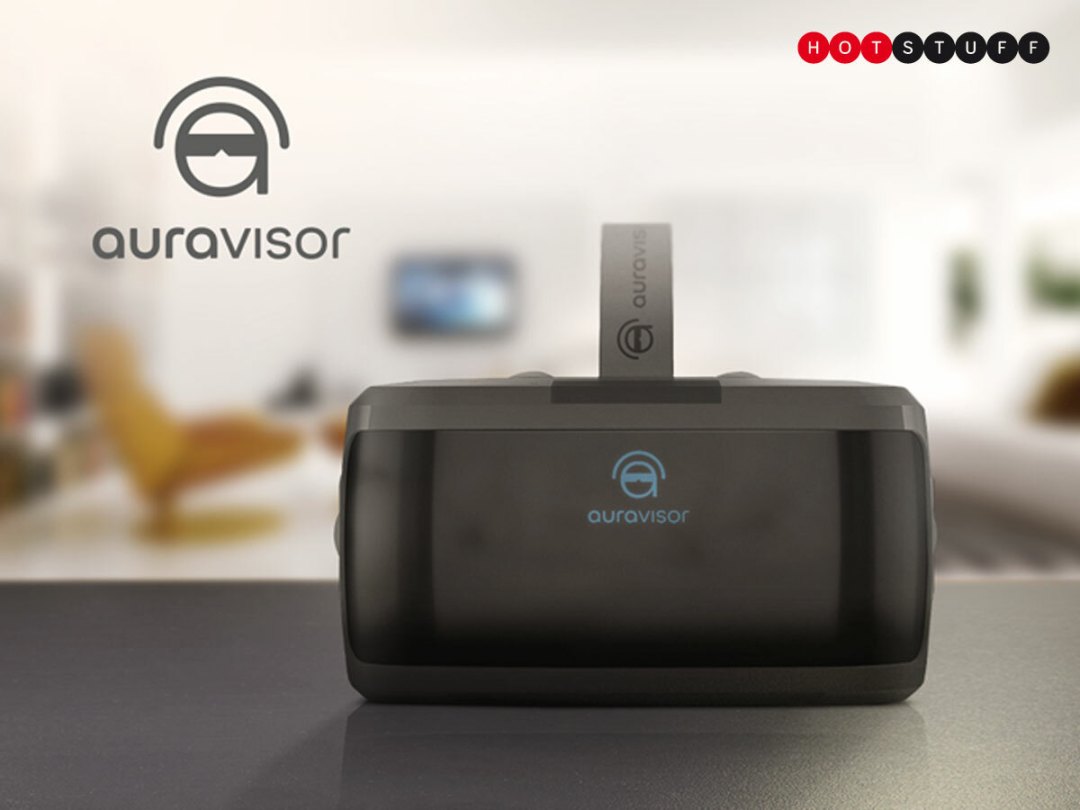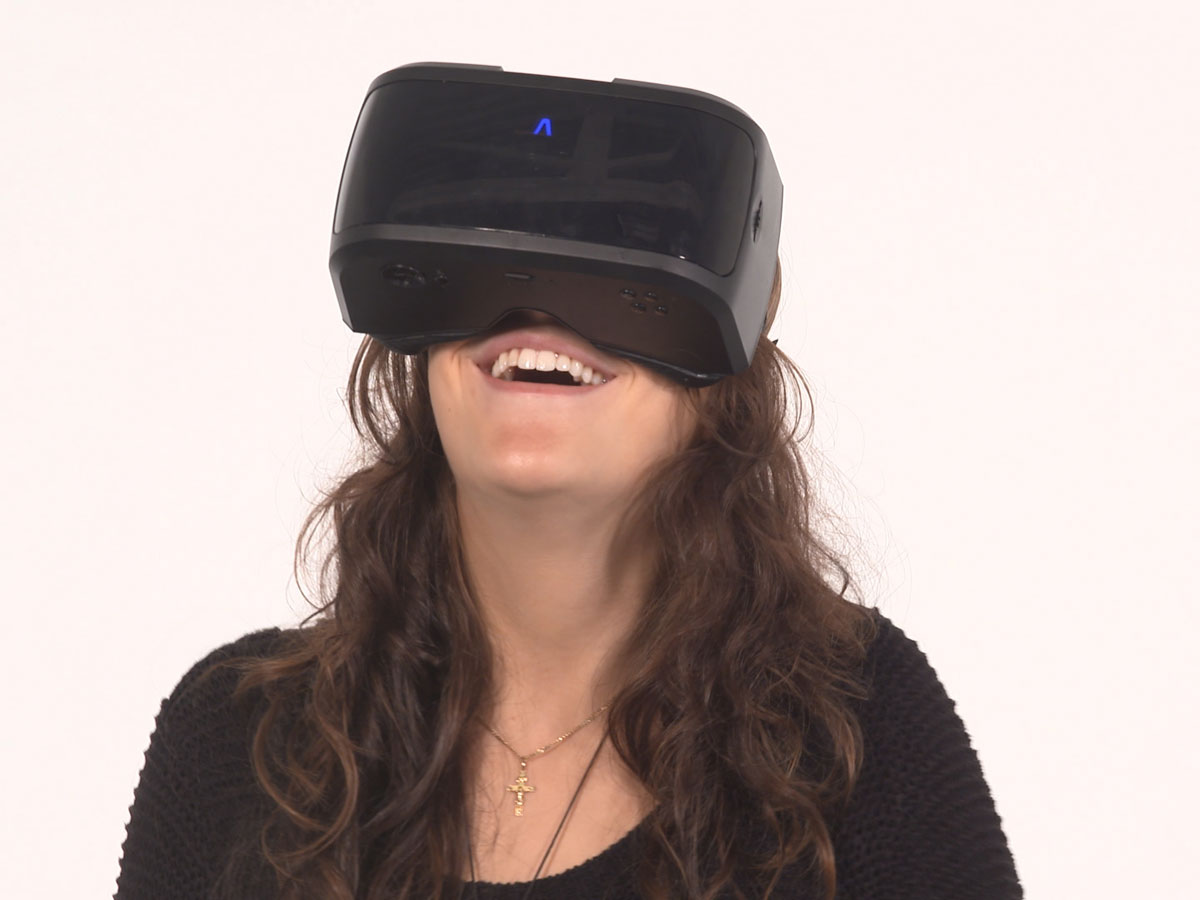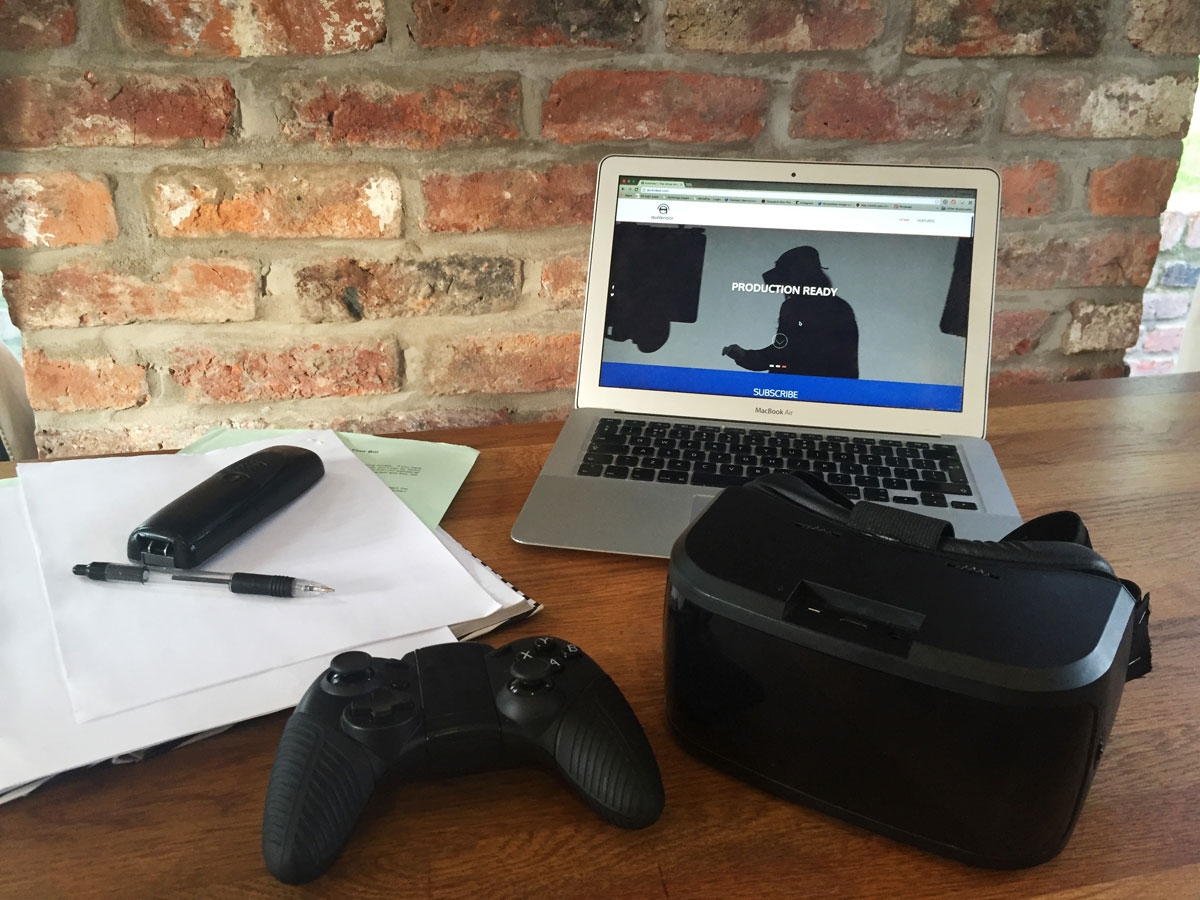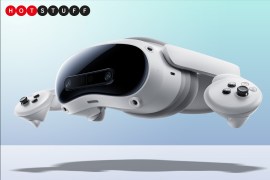AuraVisor is a VR headset that cuts the cables
An on-board Android-based computer handles all the processing, leaving you tangle-free

Another VR headset? I can’t keep up with them all
I know that feel, bro. It seems like VR headsets are the new 4K tellies, being launched on a weekly basis despite a disappointingly meagre supply of actual compelling content being available. But this one is a bit different to the others we’ve seen.
How so?
Well, the AuraVisor is a self-contained headset that does away with wires. There are wireless headsets out there already, I know, but the likes of the Samsung Gear VR and Google Cardboard require you to use a smartphone or phablet as the powerhouse and screen. This one is totally self-contained.

So it’s a tiny computer inside a headset?
Precisely. There’s a quad-core chip running an Android-based Nibiru system. It links up with a dedicated gamepad controller via Bluetooth, and has Wi-Fi so you can download apps and games from the Google Play Store. Oh, and there’s a battery that delivers five hours of use per charge.
Mobile VR without the mobile phone, then?
Yep. Oculus creator Palmer Luckey said on Twitter only this week that cables would be a “major obstacle” for the VR industry for a long time, and that mobile-based VR would be a success “long before PC VR goes wireless”. Because nothing’s going to drag you out of that magical fantasy world faster than tripping over a cable. Oculus is involved with mobile VR through its relationship with Samsung, of course, but going down the mobile-based route can be expensive; you’ve got to factor in the price of not only the headset but the phone powering it. Not so here.

Here it comes. How much will the AuraVisor cost me?
Well, if you back its Kickstarter campaign to the tune of £175 or more, you can secure your own headset and game controller, with an estimated delivery date of May 2016. The creators say it will cost around £300 when it actually launches, so there’s a pretty significant saving to be made. And the campaign has already hit its funding target, too, so it does seem as though the headset is going to be a real living, breathing product.
It looks a lot comfier than a Google Cardboard headset too
Indeed. AuraVisor has proper straps to keep it securely lodged on your dome, and padded faceplates (swappable between adult and children sizes) to stop it digging into your face. The lenses are optically adjustable too, meaning you can take off your glasses and still see clearly. And, importantly, there’s also the option to use a cable if you want, because you can connect to a computer or console via HDMI – this isn’t limited to running VR only on itself, and can be used as a headset for external systems.
What are the downsides?
Well, the screen is only 1080p resolution which we’ll wager means you’re going to see quite a bit of the pixel structure when you’ve donned the headset. That can stick a pin in the immersion bubble at times as you realise that, rather than looking around another world, you’re actually staring at an LCD screen an inch and a half away from your eyeballs. Although it does have a decent 100-degree field-of-view.
When can I try one?
Well, like we say it’s looking like spring next year for the Kickstarter pledge deliveries, so we’d imagine a full retail launch will happen soon after. Stay tuned though, because we’ll be endeavouring to get our eyes on one of these very soon.



